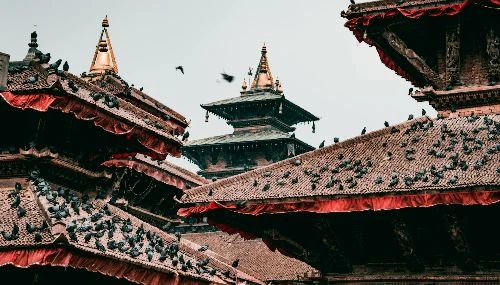Mt. Everest has been the epitome of all adventure activities. If you are an adventure lover and searching for the ultimate adrenaline rush activity then Everest Climbing is an ideal choice. However, it is not as easy as it sounds. Years of dedication and mountaineering experience can only assist anyone to successfully ascend the mountain. The chance to create history and write one’s name alongside legendary Everest climbers like Sir Edmund Hillary, Tenzing Norgay, Scott Fischer, Rob Hall, Babu Chiri, Angrita, Junko Tabei, Pasang Lhamu, and many others. Climbing Mt. Everest (8848 m) requires excessive endurance and willpower. Patience and perseverance are equally important. If you are wondering about the procedures to climb Mount Everest and about the number of days required for this amazing expedition trip then follow our blog about it.
Various Phases Required for Mt. Everest Expedition.
The total days required for the expedition are between 7 weeks to about 11 weeks depending upon the crafted itinerary, equipment, support crew, and climbers. Before attempting to ascend this gigantic mountain, adequate research about weather forecasting should be done.
First Phase – Reaching the Base Camp (5365 m)
Climbers along with the support crew members follow the Everest Base Camp Trek itinerary to reach the base camp. The trail in itself is equally mesmerizing due to the diversified attractions present in it. From the world’s most extreme airport to serene alpine forests and from hustling Sherpa capital Namche Bazaar to the more tranquil Tengboche are covered on the trail. The gradual ascent and climbing preparation help in a successful ascent. Once the climbers are well settled and properly acclimatized then only they embark on their mission to climb Everest.
Second Phase – Climb Towards Icefall (5400 to 6100 m)
Proper acclimatization ensures just about 3-5 hours of walking to reach the Icefall camp. Though the route is very short numerous dangerous spots should be taken care of. The open crevasses to the falling avalanches might be at risk. Following the instructions of Sirdar is the major thing if you have to survive in the extreme conditions of Mt. Everest.
Third Phase – Camp 1 (Valley of Silence) (6100 m to 6400 m)
The trail is on a flat place with an abundance of snow which results in some unexpected crevasses as well as rocky mountain walls. Remember that even tiny cracks can turn into deadly crevasses. Walking by clipping on the fixed ropes is highly recommended on the trail. The journey towards the first camp is about 4 – 7 hours.
Fourth Phase – Camp 2 (6800 m)
Behold this day’s trek as you can see the peak of Mount Everest and unfortunately, this would be the last camping site where climbers will have properly prepared food. For acclimatization, in this high altitude, the day walking towards Lhotse's face could be very helpful.
Fifth Phase – Camp 3 Lhotse Wall (7100 m)
The constant clip on the ropes and changing carabiners is needed even if the trail is flat. For the less experienced climbers, this journey from Camp 2 to Lhotse Wall can be about 5 – 8 hours of the journey but for the experienced, it is just about 4-6 hours of walking.
Sixth Phase – Camp 4 Death Zone (8000 m)
This is the final camping place at the end of the Lhotse wall and resembles that of the plateau on the world’s edge. After careful planning and proper acclimatization, the final attempt to reach Mt. Everest is done.
Seventh Phase – Final Summit (8848 m) and Descent
The much anticipated and most stunning day of your climbing is this day. Your answer to the question about how long it takes to climb Mt. Everest reaches the pinnacle. All the hardships endure can be worthwhile by leaving your footprints on top of the world. Don’t let you're over zeal and enthusiasm take over your cautiousness. The ascent is very difficult and the descent is also equally risky. The oxygen levels might be decreasing and you should get back to a safe camp as early as possible but without hurrying. Teamwork and coordination are highly required during the Everest expedition.
Time and tides never wait for anybody and it goes on and on. If you are a victim of procrastination then remember your life will be stalled wherever you are. Everybody has a bucket list of doing and achieving something in their life. However, people are afraid to do something to achieve such a feat. People think that money, time, and work are hindrances in the process of materializing their dreams. Therefore, take a deep breath and plan for today. Leave your footprint on top of the world. Leave a legacy of yours for generations to come.


.webp)

